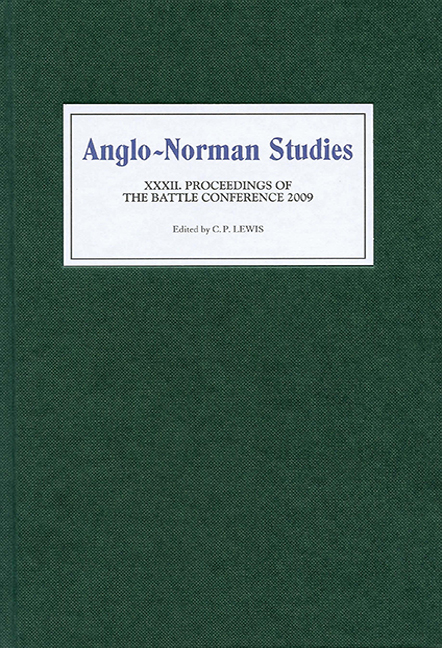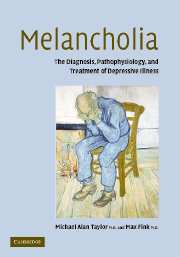104 results
Shifting the paradigm of research-to-policy impact: Infrastructure for improving researcher engagement and collective action
-
- Journal:
- Development and Psychopathology , First View
- Published online by Cambridge University Press:
- 22 March 2024, pp. 1-14
-
- Article
-
- You have access
- Open access
- HTML
- Export citation
Head and Neck Cancer: United Kingdom National Multidisciplinary Guidelines, Sixth Edition
-
- Journal:
- The Journal of Laryngology & Otology / Volume 138 / Issue S1 / April 2024
- Published online by Cambridge University Press:
- 14 March 2024, pp. S1-S224
- Print publication:
- April 2024
-
- Article
-
- You have access
- Open access
- HTML
- Export citation
Empathic communication in dignity therapy: Feasibility of measurement and descriptive findings
-
- Journal:
- Palliative & Supportive Care / Volume 20 / Issue 3 / June 2022
- Published online by Cambridge University Press:
- 19 October 2021, pp. 321-327
-
- Article
-
- You have access
- Open access
- HTML
- Export citation
The crystal structure of carminite: refinement and bond valence calculations
-
- Journal:
- Mineralogical Magazine / Volume 60 / Issue 402 / October 1996
- Published online by Cambridge University Press:
- 05 July 2018, pp. 805-811
-
- Article
- Export citation
The crystal chemistry of duftite, PbCuAsO4(OH) and the β-duftite problem
-
- Journal:
- Mineralogical Magazine / Volume 62 / Issue 1 / February 1998
- Published online by Cambridge University Press:
- 05 July 2018, pp. 121-130
-
- Article
- Export citation
Lessons Learned from the Use of Unconventional Materials for CO2 Capture
-
- Journal:
- MRS Advances / Volume 1 / Issue 44 / 2016
- Published online by Cambridge University Press:
- 04 July 2016, pp. 3027-3035
- Print publication:
- 2016
-
- Article
- Export citation
Contributors
-
-
- Book:
- The Cambridge Companion to Heidegger's <I>Being and Time</I>
- Published online:
- 05 August 2013
- Print publication:
- 31 July 2013, pp xi-xiv
-
- Chapter
- Export citation
Frontmatter
-
- Book:
- Anglo-Norman Studies XXXII
- Published by:
- Boydell & Brewer
- Published online:
- 28 April 2017
- Print publication:
- 21 July 2010, pp i-iv
-
- Chapter
- Export citation
Miscellaneous Endmatter
-
- Book:
- Anglo-Norman Studies XXXII
- Published by:
- Boydell & Brewer
- Published online:
- 28 April 2017
- Print publication:
- 21 July 2010, pp 231-242
-
- Chapter
- Export citation
List of Maps and Tables
-
- Book:
- Anglo-Norman Studies XXXII
- Published by:
- Boydell & Brewer
- Published online:
- 28 April 2017
- Print publication:
- 21 July 2010, pp vi-vi
-
- Chapter
- Export citation
Abbreviations
-
- Book:
- Anglo-Norman Studies XXXII
- Published by:
- Boydell & Brewer
- Published online:
- 28 April 2017
- Print publication:
- 21 July 2010, pp ix-xii
-
- Chapter
- Export citation
Contents
-
- Book:
- Anglo-Norman Studies XXXII
- Published by:
- Boydell & Brewer
- Published online:
- 28 April 2017
- Print publication:
- 21 July 2010, pp v-v
-
- Chapter
- Export citation

Anglo-Norman Studies XXXII
- Proceedings of the Battle Conference 2009
-
- Published by:
- Boydell & Brewer
- Published online:
- 28 April 2017
- Print publication:
- 21 July 2010
4.7 - Internet sexual offending
- from Part IV - Psychology and criminal behaviour
-
-
- Book:
- The Cambridge Handbook of Forensic Psychology
- Published online:
- 06 July 2010
- Print publication:
- 29 April 2010, pp 520-526
-
- Chapter
- Export citation
Contributors
-
-
- Book:
- The Cambridge Handbook of Forensic Psychology
- Published online:
- 06 July 2010
- Print publication:
- 29 April 2010, pp xix-xxiii
-
- Chapter
- Export citation
Melancholia
-
- Journal:
- The British Journal of Psychiatry / Volume 194 / Issue 5 / May 2009
- Published online by Cambridge University Press:
- 02 January 2018, p. 463
- Print publication:
- May 2009
-
- Article
-
- You have access
- HTML
- Export citation
Catatonia
-
- Journal:
- The British Journal of Psychiatry / Volume 194 / Issue 4 / April 2009
- Published online by Cambridge University Press:
- 02 January 2018, p. 325
- Print publication:
- April 2009
-
- Article
-
- You have access
- HTML
- Export citation
Contents
-
- Book:
- Melancholia
- Published online:
- 14 August 2009
- Print publication:
- 01 June 2006, pp v-viii
-
- Chapter
- Export citation

Melancholia
- The Diagnosis, Pathophysiology and Treatment of Depressive Illness
-
- Published online:
- 14 August 2009
- Print publication:
- 01 June 2006
9 - Achieving effective ECT
-
-
- Book:
- Melancholia
- Published online:
- 14 August 2009
- Print publication:
- 01 June 2006, pp 181-195
-
- Chapter
- Export citation



